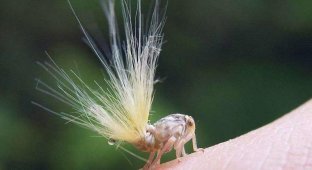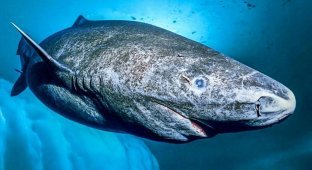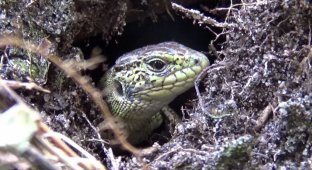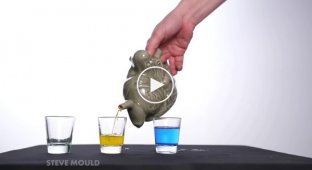Neoteny: these animals rejected the stage of adulthood, retaining the special abilities of the embryo (8 photos)
Neoteny is a phenomenon in which an animal reaches sexual maturity early in its development, usually as a larva. The specifics of neoteny are unique to each species. 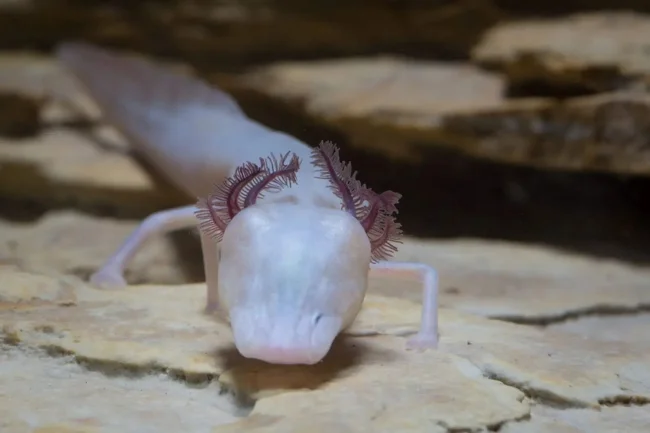
This article's guest speaker: the European Proteus. These underfed axolotl-like creatures live in the cave ecosystems of southern Europe. They are as sedentary as can be, and can sit in one place for weeks!
Sirenian amphibians, for example, cannot turn into adults under any circumstances. Throughout their lives, they remain thin-skinned (even by amphibian standards) worm-like creatures with huge gills. Some of the sirens have regressed so far in development that their skeleton consists of cartilage, like some embryos. But what forced them to reject the adult way of life and remain children forever? 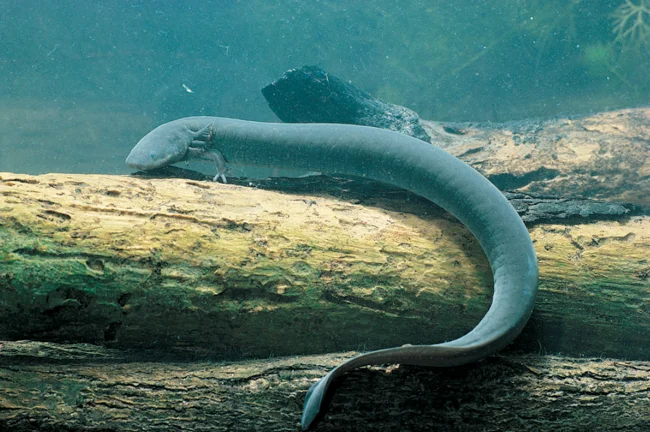
And this is a large siren, the largest representative of the siren family. But for its size it had to pay with the absence of hind legs!
Once upon a time, the ancestor of the sirens was a well-developed land amphibian with a larval aquatic stage. But when times changed, adult predators could not adapt to them. But the aquatic semi-herbivorous larvae felt just as good as before. Therefore, neoteny helped them not only not to die out, but also to grow from a small species into a whole family of amphibians. As a reminder of their terrestrial past, they only had small but developed lungs and an interventricular septum in the heart. Ordinary amphibian larvae have neither one nor the other. 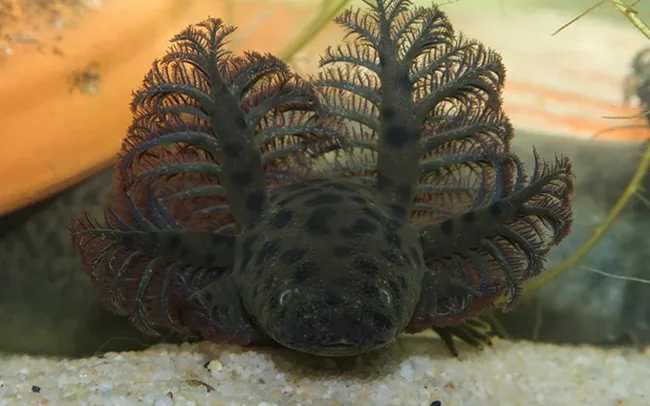
The less oxygen in the water, the larger and bushier the siren's gills. A very smart approach for amphibians living in the murky lakes and swamps of southern North America.
The world-famous axolotls have their own quirks. Despite their size and neotenic nature, they are serious predators from the Mexican highland lakes. But, frankly, their distant ancestors made a mistake settling here. There is little food in the lakes, and even less iodine, a key micronutrient needed for metamorphosis. Transformation into an adult turned out to be such an expensive pleasure that it was easier for them to master neoteny. 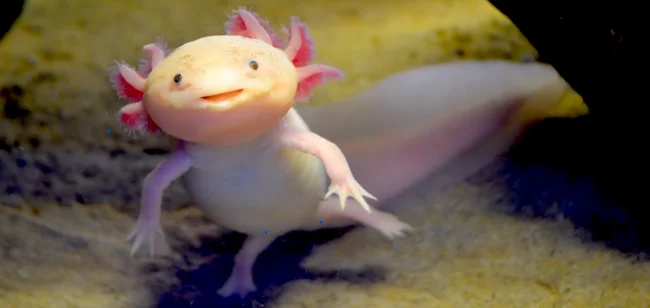
Life is more difficult for wild axolotls now than ever. Their habitat is being destroyed to accommodate the growing Mexico City and the animal population has been reduced to a few thousand individuals.
But, unlike sirens, axolotls have not lost the ability to transform into adults. If you reduce the amount of water in the terrarium and lower its temperature, as well as prescribe iodine or thyroxine injections to the axolotl, it can turn into an adult ambystoma. Or die in the process. Over millions of years of inactivity, the mechanism of metamorphosis has become very rusty and works intermittently. Therefore, we do not advise anyone to risk their pets. 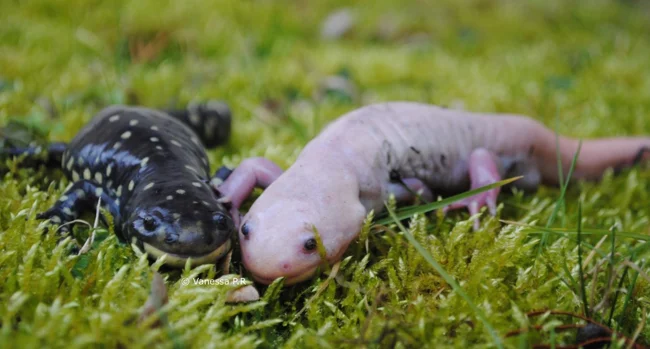
Axolotls that were forced to grow up.
But for fire salamanders, neoteny is another tool in the fight against difficult natural conditions. If the summer is cold and poor in food, then instead of turning into an adult salamander, the larva simply grows sexual organs and continues to live in its favorite pond. And nothing prevents it from leaving home the following summer, when it has accumulated enough resources for metamorphosis and migration. This neoteny is called facultative, not mandatory to perform. 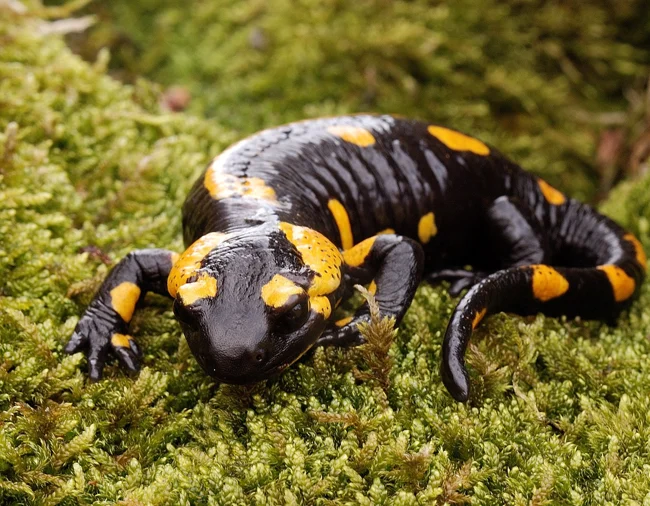
Fire salamander, you are just fire!
However, why are we only talking about amphibians? Neotenic individuals are also found among other types of animals. In South American railroad worms, females are almost indistinguishable from larvae, while males are quite normal beetles. 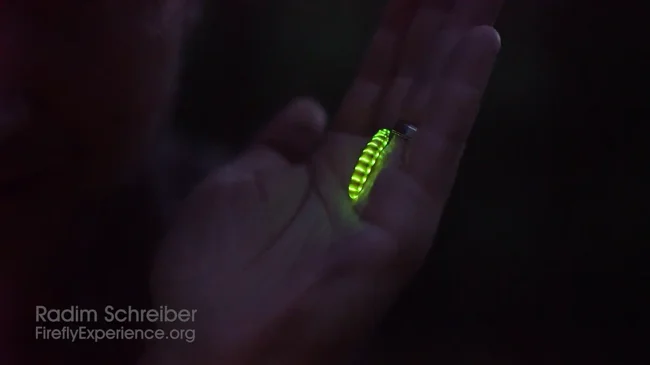
Unfortunately, railroad worms do not have vocalizations. You will not hear any "chuchu-chuchu" from them.
Even among mammals, there is a place for neotenous creatures. In 1991, mammal experts determined that the strange little animal called the naked mole rat is actually a neotenous rodent. In total, it had more than 40 “childish” characteristics: from bare skin and the absence of normal ears to low sensitivity to pain and the inability to maintain a constant body temperature. But in return, they received excellent regeneration, a long life, and intelligence that surpasses that of most rodents! 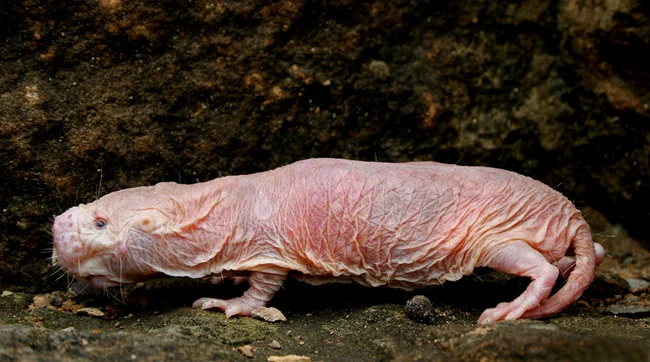
Pros: you are forever young. Cons: you look like an ancient grandfather.
And some scientists even believe that humans are neotenous apes, too. Judge for yourself: we have long limbs, a big head and a small body, just like baby monkeys. Compared to other monkeys, we are not very strong, we have a low level of hormones, and our hair is very poorly developed. But we learn new things throughout our lives, and we live a very long time. It looks like we really are eternal children. Other researchers, however, disagree with this. They argue that we need the almost complete lack of hair for thermoregulation, we have traded physical strength for crazy endurance, and we have suppressed hormones to make it easier to think. This means that we have not regressed in development, we have specialized in endurance and intelligence! What do you think about this?












